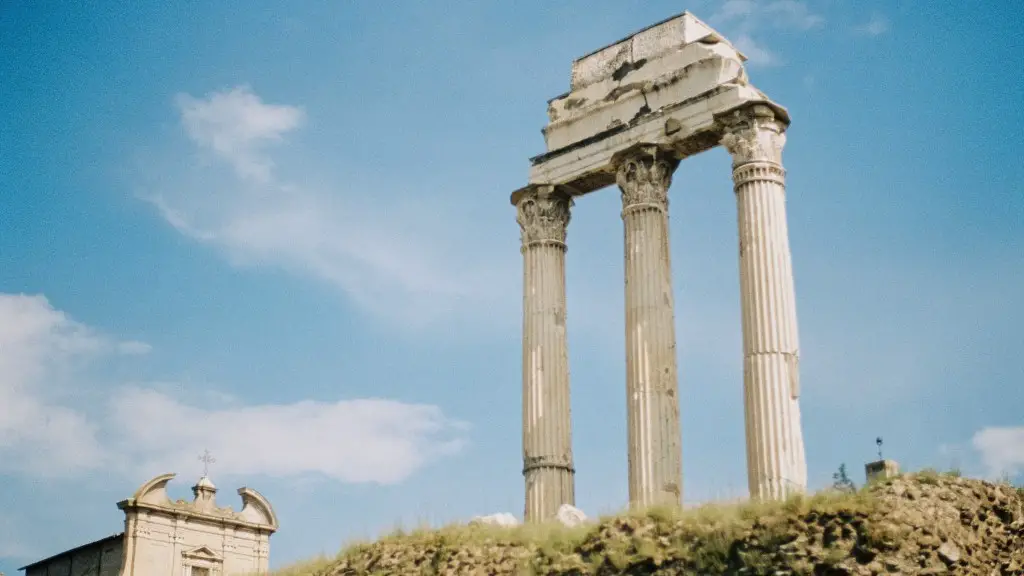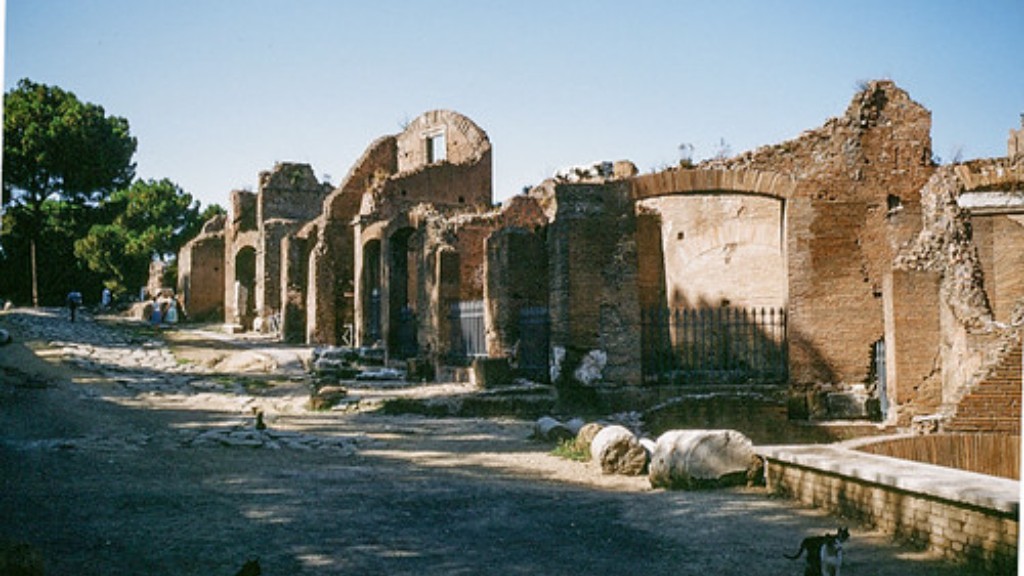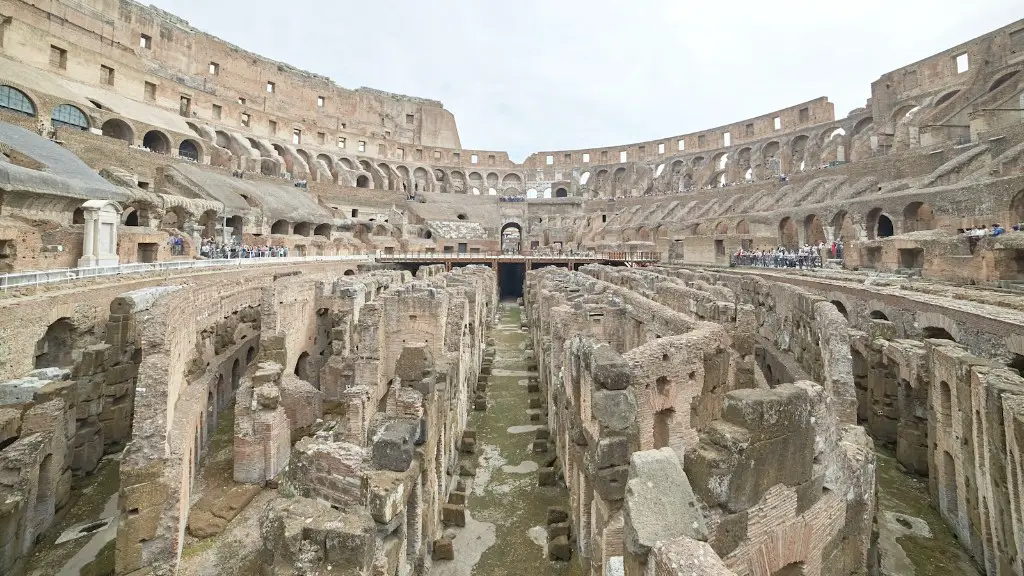Many people regard Ancient Rome as the centre of European civilised culture, and for good reason. Barbarian peoples have been seen as the outsiders, set against Rome and uninterested in Roman ways of doing things and living. But is this really the case? To really understand more about the barbarians of Ancient Rome, we need to look at the evidence with an open mind.
To some, the image of the ancient Viking invasions brings to mind images of wild, uncouth people destroying everything in their path. In actuality, these Viking people were known in Ancient Rome as the Norse – they were the people living in Scandinavia –and their culture was far more complex than the traditional view of them would lead you to believe. For one, the Norse were not just a bunch of wild raiders –they were a highly organised and settled population who had their own way of life. They built settlements and implemented laws, had their own religion and built industries. In this sense, the Norse could be seen as quite civilised in comparison to other tribes.
It is also important to remember that not all of the barbarians who interacted with Ancient Rome were raiders or warriors. Even so, some of them had an incredibly powerful political impact on Rome – the Celts, for example, were considered a threat to Rome during its campaigns in Gallia, and their political clout seemed to be influential in the form of trading and intermarriage. These barbarians were clearly not just a simple and uniform ‘barbarian tribe’, but rather a complex mix of different people and ideas.
Likewise, although the traditional view of the Goths is of a brilliant and fierce people; this view of the Goths is arguably over-stereotyped. The Goths were known to have high standards of living and many of them were passionate about creativity, both in their art and in their culture. For example, they were known as unparalleled weavers and used their skills to craft garments of superior quality, and there is archaeological evidence of their high level of creativity. Like many of Rome’s other encounters with barbarians, the Goths were not just a bunch of wild raiders, but in fact had a high degree of sophistication.
Therefore, it is clear that many of the barbarian tribes to which Rome had contact were far more complex than the traditional view of them would suggest. Barbarian tribes such as the Norse, Goths and Celts were all far more civilised than they were given credit for, with their own customs and traditions, and can almost be regarded in the same way that Roman society is seen. It is clear that these peoples interacted with the Roman Empire far more than we understand, with complex political and economic relationships.
Interaction between Rome and Barbarians
Another interesting point to consider is how Rome interacted with these barbarian peoples. Although Rome had an uneasy relationship with many of them, there was still a level of interaction, with many Romans participating in barbarian music, art and trade. There is evidence that Rome was actually quite accepting of barbarian culture, with several acts by Roman emperors to integrate them into Roman life. In some cases, certain barbarian customs were even kept in the trade agreement between Rome and certain tribes.
This is an important factor to consider: although Rome saw the barbarians as their enemies, they were still curious about their customs and lifestyle. This can be seen in Rome’s effort to build an understanding of the barbarians – they created detailed maps of their settlements and sent out emissaries to observe their customs and way of life. This might seem strange to us, as Rome was supposedly hostile to barbarians, but it shows that there was a complex relationship between Rome and its neighbours, which was certainly not always hostile.
Moreover, Rome was often able to coexist with barbarians to the point of trade and even intermarriage, especially between Gauls and Romans during Normandy invasions. This serves to suggest that the relationship between Rome and the barbarians was not strictly hostile, but had a commercial nature. That there was serious intermarriage between Roman citizens and barbarian people shows that there was a level of respect and admiration on both sides.
Barbarian peoples’ impact on Rome
It is also important to consider the impact that the barbarians had on Roman culture. Many of the customs and lifestyles that the Romans adopted were adapted from those of the barbarians. For example, most of what the Romans knew and did in terms of agriculture and warfare they learned from the Gauls, who were known as the masters of trading and warefare. Even certain aspects of Roman language was adopted from the tribal tongue.
At the same time, Roman law, which was considered to be one of the fundamental pillars of Roman civilised culture, was heavily influenced by some of the laws of the barbarians. In addition to this, there is evidence to suggest that the political structure of Rome was heavily influenced by the barbarians, with the first Roman kings coming from a barbarian background.
All of this suggests that the relationship between Rome and the barbarians was far from hostile. Rome adapted to a large extent from the barbarian cultures surrounding them, and these cultures had a major impact on the success and progress of Roman civilisation. This means that, far from being uncivilised, the barbarians in Ancient Rome were actually an integral part of the Roman Empire –and should be credited for their part in the civilisation.
Roman influence on Barbarians
On the other hand, it is also important to consider the role that Rome played in influencing the culture of the barbarians. The Romans were quite influential in terms of culture, especially as they had spent years trading with the barbarians. The influence was two-fold: the Romans used the barbarian peoples to bolster trade and increased their wealth, while at the same time, they introduced Roman customs to the barbarians, such as Roman gods, Latin language and Roman art. This can be seen in the many objects from the period that combine Roman and barbarian influences.
This shows that Rome and the barbarians were not necessarily against each other, but rather exchanging influences. In this sense, Rome used the barbarians to its own gain, while at the same time, the barbarians benefited from exposure to the Roman civilisation and culture. The two sides clearly had a complex relationship that was not always antagonistic.
Assessment of Barbarians in Ancient Rome
Overall, there is evidence to suggest that the barbarians of Rome were not necessarily the uncivilised hordes that they are seen. The evidence presented in the archaeological record shows a far more complex relationship between Rome and its neighbours, with an exchange of goods and cultural influence. It is clear that the barbarians of Rome played a far bigger role than we often give them credit for, and their contribution to the success and progress of Roman civilisation should not be overlooked.
Barbarian Religious Influence on Rome
It is also worth considering the impact that their religion had on the Roman Empire. The Romans were not particularly open to new religions and were keen to stick to the traditional Roman gods, however they were presented with something else when they encountered the barbarians. Many of the North European tribes were worshippers of Odin, Thor, and Frey, and the Romans were intrigued by their culture, even more so when they saw the devotion that their worship could elicit. This prompted a new strain of religious syncretism between the two sides, with the Romans perceiving the barbarian gods to be similar to their own and beginning to gods such as Odin into their pantheon.
This demonstrates that the Romans had a level of respect for the barbarians, and understood that their beliefs had just as much merit as their own. This is yet another example of the complex relationship between Rome and its neighbours, and shows that there was a level of mutual understanding between the two sides.
Impact of Barbarian Movements on Rome
Finally, it is important to consider the impact that the various barbarian invasions had on Rome. Although the traditional view of the barbarian invasions is one of destruction, in fact these invasions had a significant impact on the development of Roman civilisation. In some cases, the invasions helped to spur the development of new technologies and strategies, while in other cases, the influx of people and ideas helped to move the empire in a new direction. Consequently, it is clear that the barbarian invasions were not simply destructive events, but also contributed to the development of the Roman Empire.
Overall, it is important to consider the role that the barbarians in Ancient Rome had on civilisation. The evidence presented here shows a far more complex relationship between the two sides than was traditionally thought, with an active exchange of goods and ideas. It is clear that the barbarians played a major role in the success and progress of Roman civilisation and should not be overlooked in the discussion.




